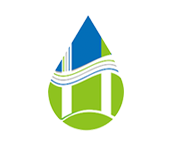The anti-staining agent TAB has the greatest influence on the maximum absorbance of the dye. Its addition causes the maximum absorption wavelength of the dye to shift by 1 nm to blue and the maximum absorbance increases by 0.45.
Analysis results of orthogonal test.
Explore three self-made compounding auxiliary combinations: Auxiliary A (PDMDA / 1815 / sodium tetrahydroborate and sodium bisulfite), Auxiliary B (MAM-DMDA / CMC / isopropanol) and Auxiliary C (CSt- MAM / oil repellent CB / AEO-9 phosphate) (mass ratio is 1: 1: 1), and the interaction of two commercially available additives (anti-stain agent TAB, anti-stain agent PSP) and acid dyes. Prepare an aqueous solution of the above five additives (containing 30% aqueous solution of the original additives), mix with acid dye, the mass concentration of the additive is 2g / L, and the mass concentration of the dye is 1% o.w.f.
The same additives have a greater influence on the acid orange 3RL and the maximum absorbance. The anti-stain agent TAB, A and A have a greater influence on the maximum absorbance of acid orange 3RL, while the additives B and the anti-stain agent PSP have a smaller effect on the maximum absorbance of acid orange 3RL, but the anti-stain agent PSP The maximum absorption wavelength of the dye has the greatest influence.
The addition of the anti-staining agent TAB shifts the maximum absorption wavelength of the dye toward red by 10 nm, and the maximum absorbance increases by 0.585; the auxiliary A shifts the maximum absorption wavelength of the dye toward red by 11-12 nm, and the maximum absorbance increases by 0.320; The red shift is 10-11nm, and the maximum absorbance is increased by 0.252; the anti-staining agent PSP increases the maximum absorption wavelength of acid orange 3RL by 14nm.
As with Acid Orange 3RL, for Acid Red 4344, the anti-staining agents TAB, Auxiliary C and A have a greater influence on the maximum absorbance of the dye, while the other two additives have basically no effect on the maximum absorbance of the dye. In addition to the anti-staining agent TAB, the five kinds of additives shift the maximum absorption wavelength of the dye to 9 nm toward the red. Other additives have little effect on the maximum absorption wavelength of the dye. However, the addition of A can significantly reduce the absorbance of Acid Red 4344, and reduce the maximum absorbance of Acid Orange 3RL by 0.259 nm; the addition of anti-staining agent TAB increases the maximum absorbance of the dye by 0.408 nm; the addition of Auxiliary C maximizes the dye The absorbance increases by 0.154nm.
Among the five auxiliaries, anti-stain agent TAB, A and PSP have a great influence on acid yellow N-MR. The other two additives have no obvious effect on the maximum absorption wavelength and maximum absorbance of the dye.
The anti-staining agent TAB has the greatest influence on the maximum absorbance of the dye. Its addition causes the maximum absorption wavelength of the dye to shift by 1 nm to blue, and the maximum absorbance increases by 0.45; Adding shifts the maximum absorption wavelength of the dye toward red by 11 nm, and the maximum absorbance decreases by 0.063; Auxiliary C increases the maximum absorbance of the dye by 0.053.
The combination of three additives (1815 / sodium tetrahydroborate and sodium bisulfite mixture, CMC / isopropanol, oil repellent / AEO-9 phosphate) can improve the stain resistance of the two fibers.
In order to explore the possibility of applying five vinyl polymers to the anti-staining of polyester spandex in the reduction and cleaning, because the interaction between St-MAM and MAM-DM-AA and the dye is not obvious and the water solubility is not good, we choose to compound Three kinds of auxiliary combinations: auxiliary A (PDMDA / 1815 / a mixture of sodium tetrahydroborate and sodium bisulfite), auxiliary B (MAM-DMDA / CMC / isopropanol), auxiliary C (CSt-MAM / Oil repellent / AEO-9 phosphate) (mass ratio is 1: 1: 1), on this basis, the staining properties of different structural types of disperse dyes on polyester and spandex are investigated, and the effect compared with the commercial sale is also compared. The performance difference between the two best anti-staining agents is mainly to explore the application possibility of the combination of the above three additives for anti-staining of polyester-spandex blended fabrics with different structure types.
On the basis of orthogonal test, anthraquinone-type dye disperse red 3B was used to simulate the reduction and cleaning of polyester and spandex, and the concentration of additives (0.5-2 g / L) was changed.
The anti-staining effect of the fiber is the best; in the commercially available products, the addition of the anti-staining agent TAB greatly reduces the K / S value of the spandex. The concentration of the auxiliary agent also has a greater impact on the K / S value of the two fibers. The staining effect of spandex is best at 1g / L.
The effect of the two additives on the stain resistance of polyester fiber is not obvious.



